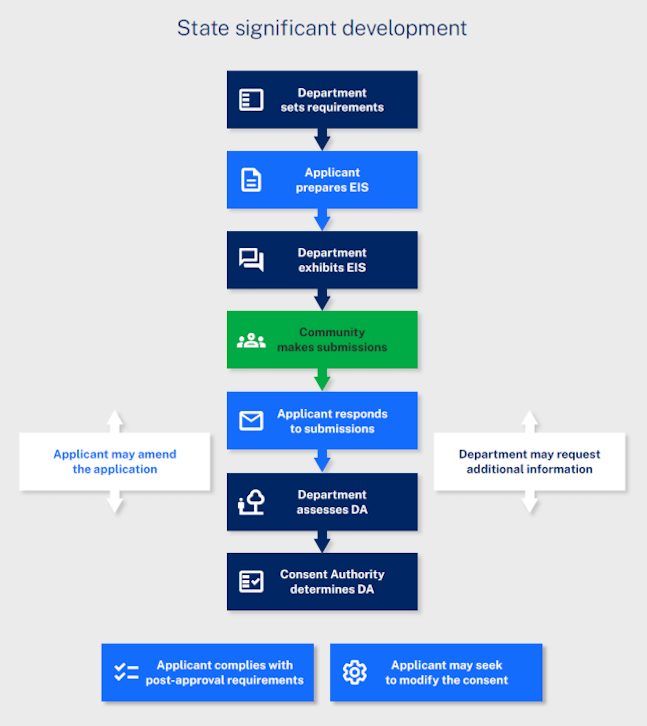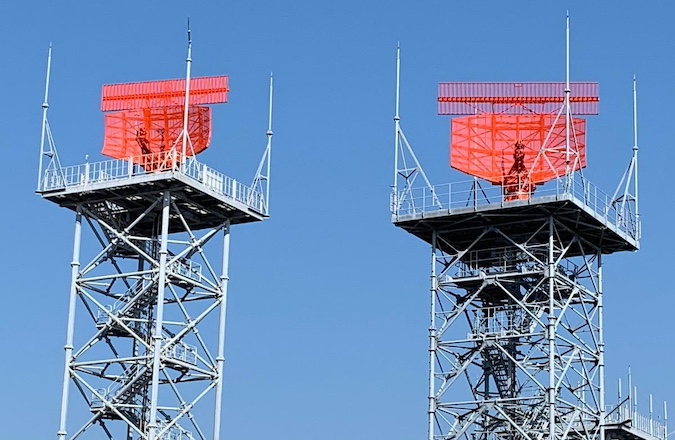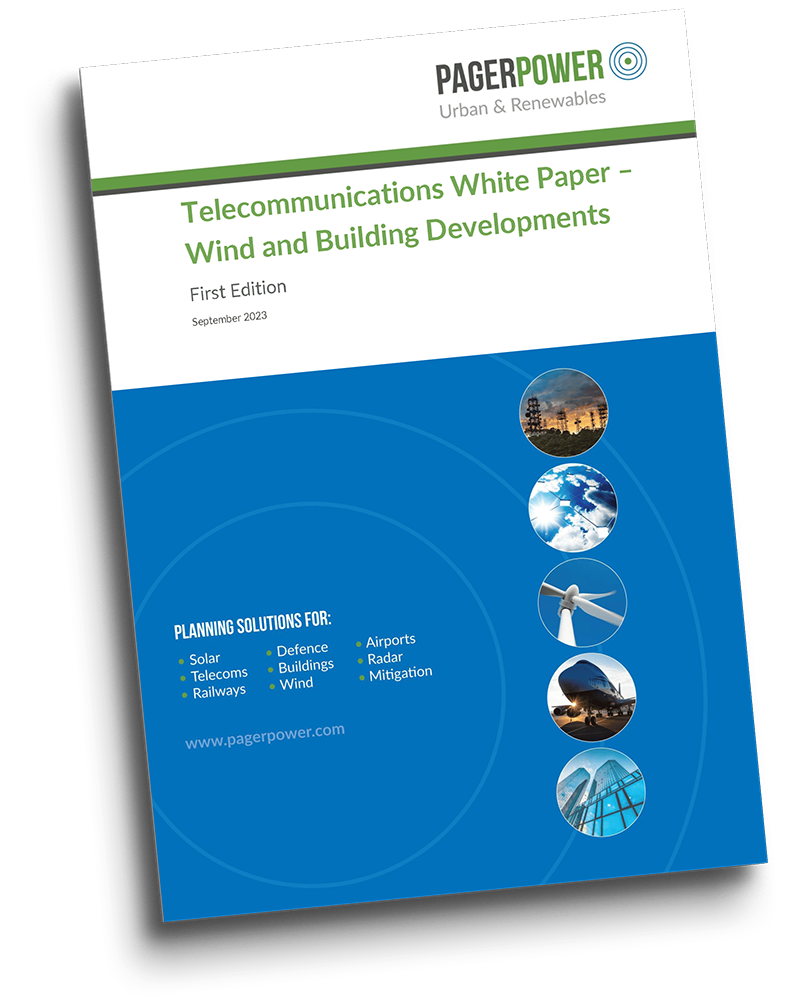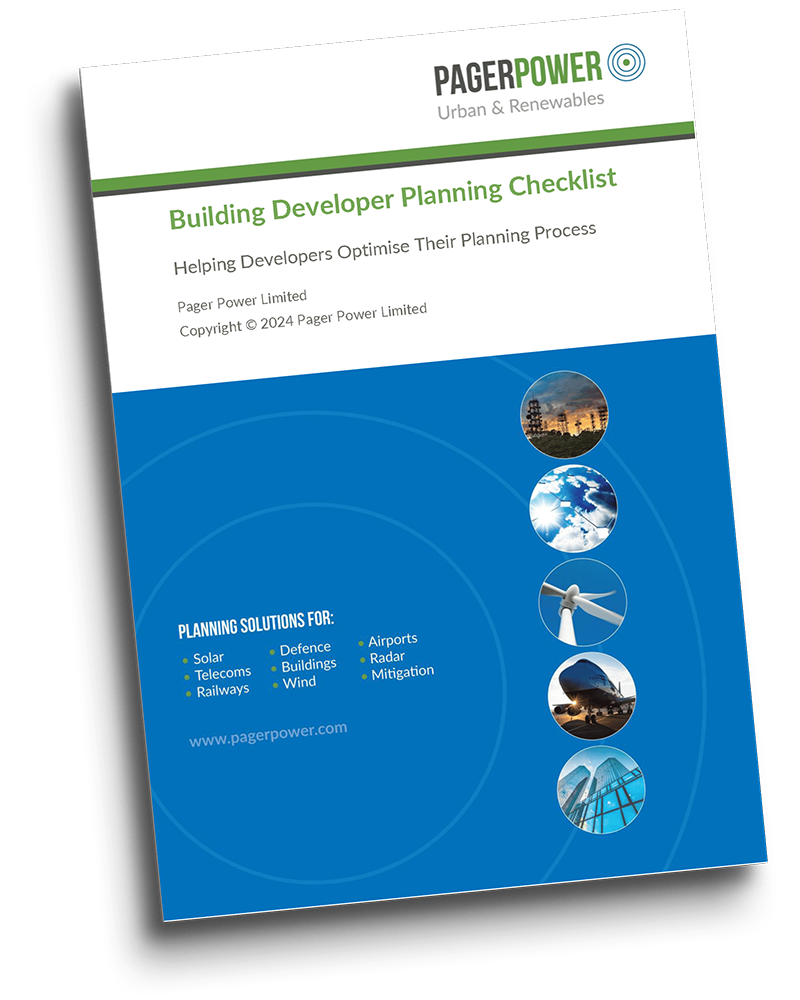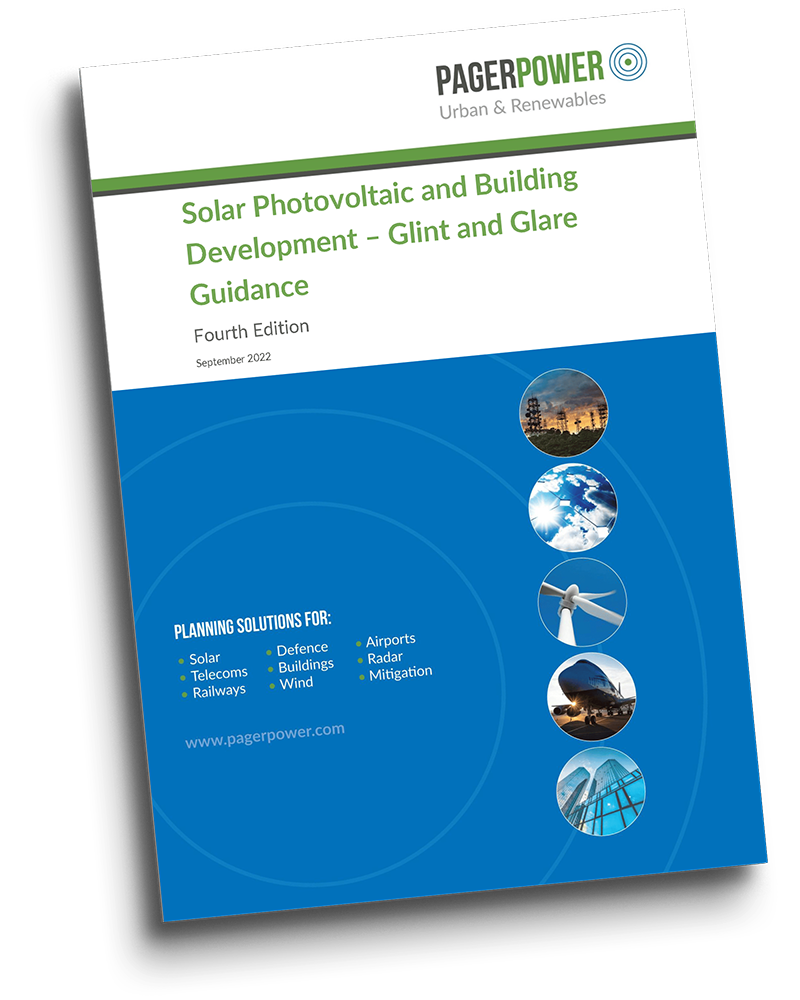Planning Process for State Significant Developments in New South Wales

Most coal-fired power stations in New South Wales (NSW) are scheduled to close in the next decade [1]. Solar farms are needed to help meet the legislated emissions reduction targets listed under the Climate Change (Net Zero Future) Act 2023. Despite being a key part of the infrastructure required to reach lofty sustainability targets, understanding the planning process can be headache inducing. This article will break down the key elements of the planning process for State Significant Developments (SSDs).
What Are State Significant Developments?
State Significant Developments are projects that require development consent and have a capital investment value of more than AU$30 million or a capital investment of value of more than AU$10 million and it’s in an environmentally sensitive area of state significance [2]. Defined within the Environmental Planning and Assessment Act 1979.
The NSW government has created five Renewable Energy Zones (REZs) across the state. These REZs equate to modern-day power stations, combining renewable energy, storage, and network infrastructure [3]. To support the transition from coal-power to renewable energy, the NSW government is encouraging development in REZs to ensure that development occurs in areas close to existing infrastructure. These REZs also have fewer environmental, heritage, and land-use constraints compared to other parts of the state, contributing to the choice of location.
Development consent is an important step in the planning process. The Transport and Infrastructure State Environment Planning Policy (SEPP) provides for the specific consideration of renewable energy proposals in regional cities [4]. This applies to SSD development for solar generation on mapped land in the following cities: Albury, Armidale, Bathurst, Dubbo, Griffith, Orange, Tamworth, and Wagga Wagga. In these areas the consent authority must not grant development consent unless it is satisfied that the development is located to avoid significant conflict with existing/approved residential/commercial uses of land, and is unlikely to have an adverse impact on the city’s capacity for growth, or the scenic quality and landscape character [5].
Development Applications
All SSDs undergo the same comprehensive assessment, however the scale and impacts of these projects can vary. Therefore it is important to ensure that the level of community engagement and assessment for each project is proportionate to the scale and impacts of the project [6]. All SSDs require development consent from either the Independent Planning Commission or the Minister before they can proceed [7]. The flow chart in Figure 1 displays the application process.
Figure 1: SSD assessment steps.
Applicants for solar energy projects must then prepare their environmental impact statements (EIS) according to the planning secretary’s environmental assessment requirements and the SSD guidelines. The purpose of the EIS is to help the community, councils, government agencies, and the consent authority to understand the impacts of the project so that an informed decision can be made.
The EIS must be prepared in accordance with the specific environmental assessment requirements (SEARs). The SEARs are tailored to the specific industry and focus on key assessment matters that are common, including engaging with the community, councils, and government agencies [8]. SEARs for solar energy developments are issued by the department within 7 days of an application being made. The SEARs will expire if the EIS is not submitted within 2 years. Preparation of the EIS may include the undertaking of a Glint and Glare assessment, especially in more populated areas. Once the department receives the EIS, it will exhibit the development application for at least 28 days, giving the community an opportunity to have their say on the project [9].
The consent authority will assess the overall significance of any impacts by reviewing the EIS and any relevant submissions received via the exhibition, and consider the broader public interest.
The above guidelines are for unrestricted, straightforward SSDs. Larger-scale and higher-impact SSDs are more nuanced and have more specific processes depending on the situation. In these cases, further communication with the council and related government agencies is recommended.
About Pager Power
Pager Power undertakes technical assessments for developers of renewable energy projects and tall buildings worldwide. For more information about what we do, please get in touch.
References
[1] https://www.bbc.co.uk/news/business-60411622.[2] 4.36, EP&A Act; section 2.6 and schedule 1, section 20, State Environmental Planning Policy (Planning Systems) 2021 (Planning Systems SEPP).
[3] https://shared-drupal-s3fs.s3.ap-southeast-2.amazonaws.com/master-test/fapub_pdf/Lisa+Drupal+Documents/16007_DPIE+Large+Scale+Solar+Energy+Guidelines_26-9-22.pdf.[4] https://legislation.nsw.gov.au/view/html/inforce/current/epi-2021-0732#sec.2.4.
[6] https://www.planning.nsw.gov.au/sites/default/files/2023-03/state-significant-development-guidelines.pdf. [8] https://www.planning.nsw.gov.au/sites/default/files/2023-03/state-significant-development-guidelines.pdf. [9] https://shared-drupal-s3fs.s3.ap-southeast-2.amazonaws.com/master-test/fapub_pdf/Lisa+Drupal+Documents/16007_DPIE+Large+Scale+Solar+Energy+Guidelines_26-9-22.pdf.Figure 1: https://shared-drupal-s3fs.s3.ap-southeast-2.amazonaws.com/master-test/fapub_pdf/Lisa+Drupal+Documents/16007_DPIE+Large+Scale+Solar+Energy+Guidelines_26-9-22.pdf.https://www.pagerpower.com/wp-content/uploads/2025/05/NSW-thumbnail.jpeg

